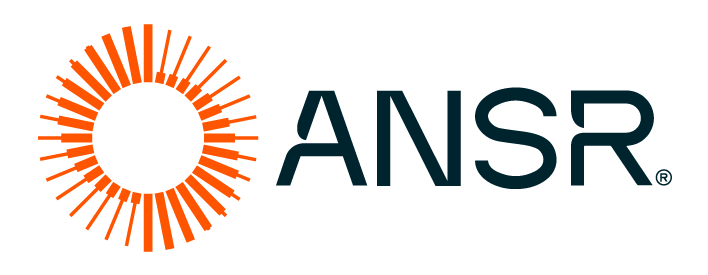Build an Offshore Team in India with the BOT Model
The need for agile and scalable solutions is paramount for any business aiming for sustained growth. For many enterprises, building a dedicated offshore team in a talent-rich location like India presents a compelling opportunity.
However, navigating the intricacies of establishing a legal entity, ensuring compliance, and attracting top talent often poses significant challenges.
This is where the Build-Operate-Transfer (BOT) model emerges as a strategic, low-risk alternative to traditional captive centers. The BOT model lets a company tap into a global talent pool and establish a strong presence in a new market without upfront capital expenditure and operational complexities.
How BOT Works
The BOT model is a flexible and phased approach to establishing a dedicated offshore team. It’s essentially a partnership where a third-party service provider manages the entire life cycle of the offshore team from its inception to its eventual transfer to the client. This approach provides a significant advantage over direct captive settings, as it reduces risks and provides a controlled environment for growth.
Build, Operate, Transfer
The model is broken down into three distinct phases:
- Build: The service provider handles all the first setup. This includes legal entity formation, infrastructure setup, and, most critically, recruiting a dedicated team based on the client’s specific requirements. The provider uses local expertise to find the right talent, ensuring a strong cultural and technical fit.
- Operate: Once the team is built, the provider takes on the day-to-day operational responsibilities. This includes human resources (HR), payroll, administration, and performance management. The client maintains complete strategic and technical control over the team, directing their projects and setting goals, while the provider ensures a seamless working environment.
- Transfer: After a pre-agreed period, the entire offshore operation, including the team, assets, and legal entity, is transferred to the client. The client then assumes full ownership and control, effectively converting the offshore team into a wholly owned subsidiary or captive center.

Factors to Consider Before Opting for the BOT Model
The BOT model isn’t a one-size-fits-all solution. It’s particularly well-suited for businesses that are considering a long-term offshore strategy but are not ready to commit to the significant upfront investment and operational risks of a direct captive center. It is a tactical pilot, letting companies test the waters and validate their offshore strategy before committing.
Scale Triggers
Key triggers for adopting a BOT model often include:
- High growth and scaling needs: A firm is experiencing rapid growth and needs to quickly scale its teams to meet demand without the long lead times of internal hiring.
- Talent shortage: The local talent pool is unable to deliver a fit in terms of skill match, and a firm needs access to a wider, global talent market to find specialized skills.
- Cost optimization: A business wants to reduce operational costs associated with salaries, infrastructure, and overheads, leveraging the cost-effectiveness of the Indian market.
- Risk mitigation: A firm is hesitant to make a big capital investment and is looking for a low risk, phased approach to enter a new market.
Governance and Knowledge Transfer
Effective governance and a structured knowledge transfer (KT) process are critical to the success of a BOT engagement. These elements ensure that the offshore team operates as a seamless extension of the onshore organization from day one and that the transition to a captive model is smooth and successful.
KPIs and Knowledge Transfer
- Key Performance Indicators (KPIs): From the outset, both parties must set clear, measurable KPIs. These range from recruitment timelines and team productivity to the ones defined in service level agreements (SLAs). Regular performance reviews and transparent reporting ensure that the team achieves its goals and that the client has a clear view of the operation’s health.
- Knowledge Transfer (KT): Knowledge transfer is a continuous process, not just a one-time event at the end of the contract. The service provider implements a structured KT framework that ensures that all operational knowledge, intellectual property, and institutional memory is carefully documented and shared. This process ensures that when the team is transferred, there is no loss of continuity or productivity. This includes technical knowledge, operational processes, and cultural nuances among many others.
Financials and Total Cost of Ownership
A thorough understanding of the financial impact is essential when assessing the BOT model. While setting up a direct captive may appear to be more cost effective in the long-term, the Total Cost of Ownership (TCO) reveals a more nuanced picture.
Breakeven vs Captive
The financial case for a BOT model is strong. While the initial operational costs might be slightly higher than a direct captive due to the provider’s service fee, the model eliminates significant upfront capital expenditure and the associated risks. The breakeven point for a BOT engagement is typically reached much faster than a traditional captive center.
This is because the client avoids legal setup, real estate, and initial HR and recruitment infrastructure costs. The BOT model allows companies to start generating value and a return on their investment much sooner. The initial investment is lower, and the operational costs are predictable, making financial planning more straightforward.
Transition and Day-1
The transition phase is the final act of the BOT model and is carefully managed to ensure a smooth transfer. The aim is to make the transfer as invisible as possible to the offshore team and the business.
Tools and Access
Before the handover, a detailed transition plan is jointly worked out. This plan covers all aspects of the transfer, from the legal and financial transfer to the practical, daily operations. Key to a successful transition is ensuring the offshore team has all the necessary tools and access to continue their work.
This includes access to corporate networks, software licenses, communication platforms, and HR systems. A well-executed transition plan ensures that on “Day 1” of the captive center, it is work as usual for the team and the client.
Conclusion
The Build-Operate-Transfer (BOT) model offers companies a proven way to scale globally with agility, while minimizing risk and upfront investment. By harnessing India’s deep talent pool through a structured, phased approach, businesses can accelerate growth, validate their offshore strategy, and seamlessly transition into a fully owned captive center when ready.
At ANSR, we’ve enabled 175+ global enterprises to successfully establish and scale their offshore teams in India through BOT and beyond. For enterprises seeking a low-risk, future-ready approach to building global capabilities, ANSR provides the ideal starting point.




